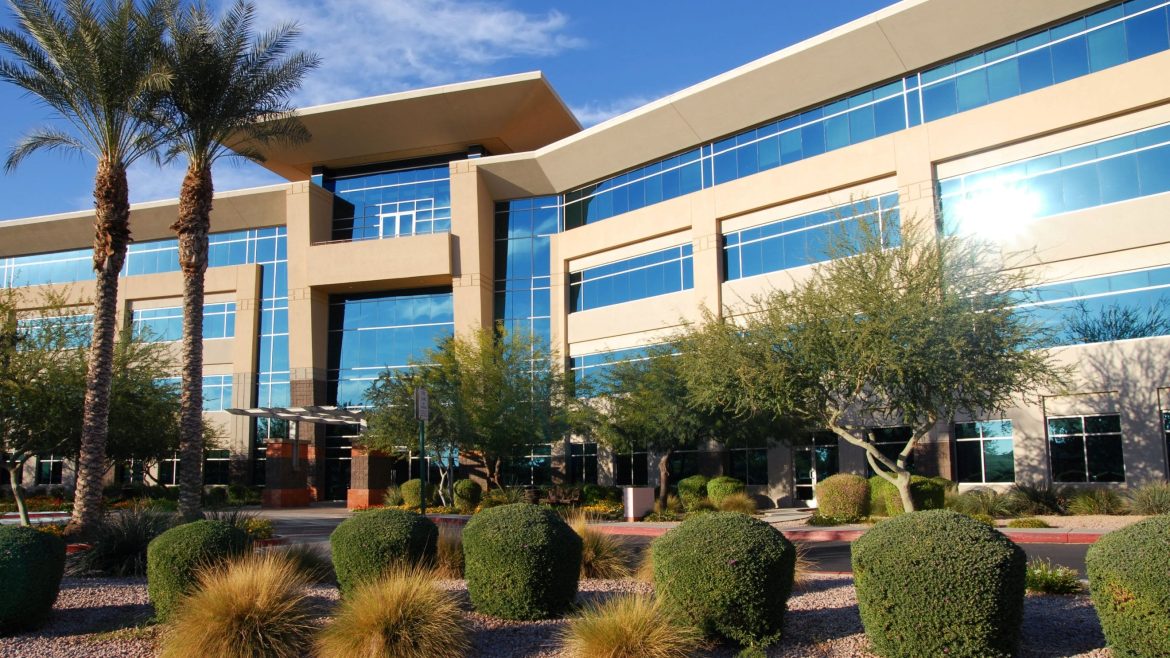Gottlieb Law, PLC provides this article for information purposes only and nothing herein creates an attorney-client relationship. You should not take any actions in reliance on any of the information contained herein without consulting with qualified legal counsel first and reading this article is not a proper substitute for seeking legal advice of your specific situation. Laws change over time and you should seek counsel to discuss any specific legal questions.
When your company is ready to expand, relocate or establish a new office, negotiating a commercial lease can be a critical part of the process. A well-negotiated lease can save your company time and money while minimizing future conflicts with the landlord. To help you navigate this complex process, we’ve put together a comprehensive checklist for commercial lease negotiations in Arizona. This step-by-step guide will help you understand key elements of lease agreements and ensure that you and your company are prepared for your next negotiation.
Step 1: Assemble Your Team
A successful lease negotiation begins with a strong team with valuable experience and insight into the local real estate market. To make sure your team includes the right experienced professionals who can provide guidance and support throughout the process, you should generally include the following key people:
- A commercial real estate broker/agent (with experience in your desired space)
- A real estate attorney
- An architect or space planner
- A financial advisor/accountant
Step 2: Understand Your Needs
Before starting your search for new office space, assess your company’s current and future needs. Consider factors such as:
- Location: Proximity to clients, competitors, and public transportation
- Space requirements: Current and projected headcount, common areas, and conference rooms
- Growth projections: Ability to expand within the leased space or within the building
- Budget: Total costs, including rent, utilities, maintenance, and other expenses
Step 3: Evaluate Potential Locations
Once you understand your needs, work with your broker to identify potential office locations. Evaluate each property based on factors such as:
- Lease terms: Length, renewal options, and termination clauses
- Rental rate: Base rent, additional rent, and rent escalations
- Tenant improvements: Build-out costs and allowances provided by the landlord
- Operating expenses: Common area maintenance (CAM) charges, taxes, and insurance
- Accessibility: Parking, public transportation, and ADA compliance
Step 4: Negotiate the Letter of Intent (LOI)
A letter of intent (LOI) is a non-binding document that outlines the key terms of the lease, serving as a foundation for the lease agreement. Work with your attorney and broker to negotiate favorable terms, such as:
- Rent abatement: Free or reduced rent for a specified period
- Tenant improvement allowance: Financial assistance from the landlord for build-out costs
- Right of first refusal: Opportunity to lease additional space before it’s offered to other tenants
- Relocation clause: Landlord’s obligation to provide comparable space in the event of a required move
- Options to renew: Opportunity to extend the lease beyond the original lease term
Step 5: Review and Negotiate the Lease Agreement
Once the LOI is finalized, the landlord will prepare a lease agreement based on the agreed-upon terms. Thoroughly review this document with your attorney to ensure it accurately reflects the LOI and doesn’t include any unfavorable clauses. Some key items to review include:
- Use clause: Defines the permitted use of the leased space
- Assignment and subletting: Conditions under which you may transfer or share the lease
- Maintenance and repairs: Responsibility for maintaining and repairing the premises
- Alterations and improvements: Process for obtaining landlord approval for changes to the space
- Insurance and indemnification: Required coverage levels and liability protection
Step 6: Conduct a Site Inspection
Before signing the lease, conduct a thorough site inspection with your architect or space planner. Ensure the space meets your needs and is in good condition. Address any concerns with the landlord and negotiate necessary repairs or improvements. Working with a certified commercial property inspector to review every aspect of the space and your intended use will help avoid many issues after move-in. It can also assist with key details that might need to be changed or added in the final lease agreement.
Step 7: Finalize the Lease
Once all terms have been negotiated and the lease agreement has been thoroughly reviewed with your real estate attorney, sign the document and provide the required security deposit. Keep a copy of the signed lease for your records.
Step 8: Plan Your Move
Now that you’ve secured your new office space, your company can begin planning the move. Coordinate with your team to ensure a smooth transition and make sure to include the following steps:
- Develop a detailed moving timeline: Outline the tasks and deadlines associated with relocating, such as obtaining permits, scheduling movers, and setting up utilities.
- Engage a space planner or architect: Collaborate with a professional to design the layout of your new office, ensuring optimal functionality and adherence to local building codes. As mentioned, it is best to engage this professional early in the process and get their input into space suitability, build out costs and estimated timeline.
- Select a reliable moving company: Research and hire a reputable commercial moving company with experience in office relocations.
- Notify stakeholders: Inform employees, clients, and vendors about your upcoming move and provide them with your new address and contact information.
- Organize IT infrastructure: Coordinate with your IT department or service provider to plan the setup and transfer of your technology infrastructure, including computers, servers, and phone systems. Designate someone from your company to test if these critical components are working properly before setting the final move.
- Create a communication plan: Develop a strategy for keeping employees informed about the move and addressing any questions or concerns that may arise.
- Obtain necessary permits and licenses: Ensure that you have all required permits and licenses for operating your business at the new location, such as zoning permits and business licenses.
Step 9: Set Up Your New Office Space
As you prepare to move into your new office, keep these considerations in mind:
- Coordinate with the landlord: Communicate with the landlord or property manager to schedule move-in dates, confirm building access, and discuss any other logistical concerns.
- Set up utilities and services: Establish accounts with utility providers, such as electricity, water, and gas, as well as any necessary services like janitorial or security.
- Complete tenant improvements: Work with your architect, space planner, or contractor to complete any necessary build-outs or modifications to the space.
- Install furniture and equipment: Arrange for the delivery and installation of office furniture, appliances, and technology equipment.
- Implement safety measures: Ensure your new office complies with local fire and safety codes, such as installing smoke detectors, fire extinguishers, and emergency exit signs.
Step 10: Move-In and Post-Move Considerations
Once you’ve successfully moved into your new office space, take the following actions to ensure a smooth transition:
- Conduct a post-move inspection: Walk through the space with your team to identify any issues or concerns that need to be addressed with the landlord.
- Update your business information: Notify government agencies, banks, and other relevant entities of your new address and contact information.
- Distribute new access cards or keys: Provide employees with the necessary access credentials for the new office space.
- Host a welcome event: Organize a gathering for employees to celebrate the move and acclimate to the new environment.
Following a Commercial Lease Negotiation Checklist to Find the Right Office Space
Negotiating a commercial lease for your new office space in Arizona can be a complex and time-consuming process. By following this comprehensive checklist, you’ll be well-prepared to secure a favorable lease that meets your company’s needs and supports future growth. Remember to assemble a strong team of professionals, understand your needs, evaluate potential locations, negotiate key terms, and plan a successful move. With careful planning and attention to detail, your company will be well-positioned to thrive in its new office space. The attorneys at Gottlieb Law are prepared to assist your company with the key aspects of finding a new office space and negotiating a favorable commercial lease agreement. Contact us today at 602-899-8188 to schedule an initial consultation or make an appointment on our contact us page.
Gottlieb Law, PLC provides this article for information purposes only and nothing herein creates an attorney-client relationship. You should not take any actions in reliance on any of the information contained herein without consulting with qualified legal counsel first and reading this article is not a proper substitute for seeking legal advice of your specific situation. Laws change over time and you should seek counsel to discuss any specific legal questions.

